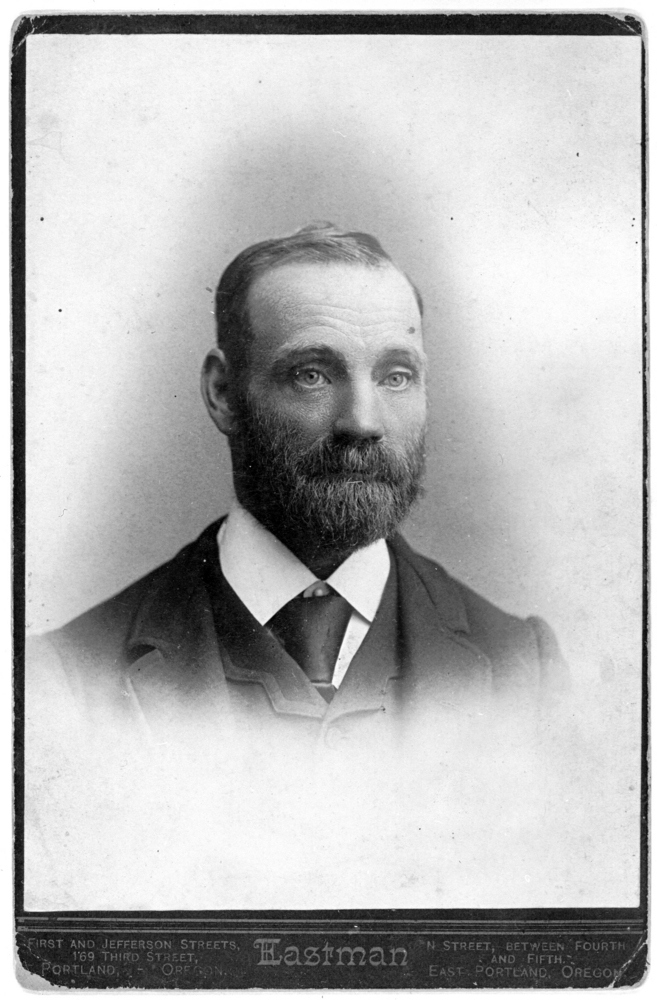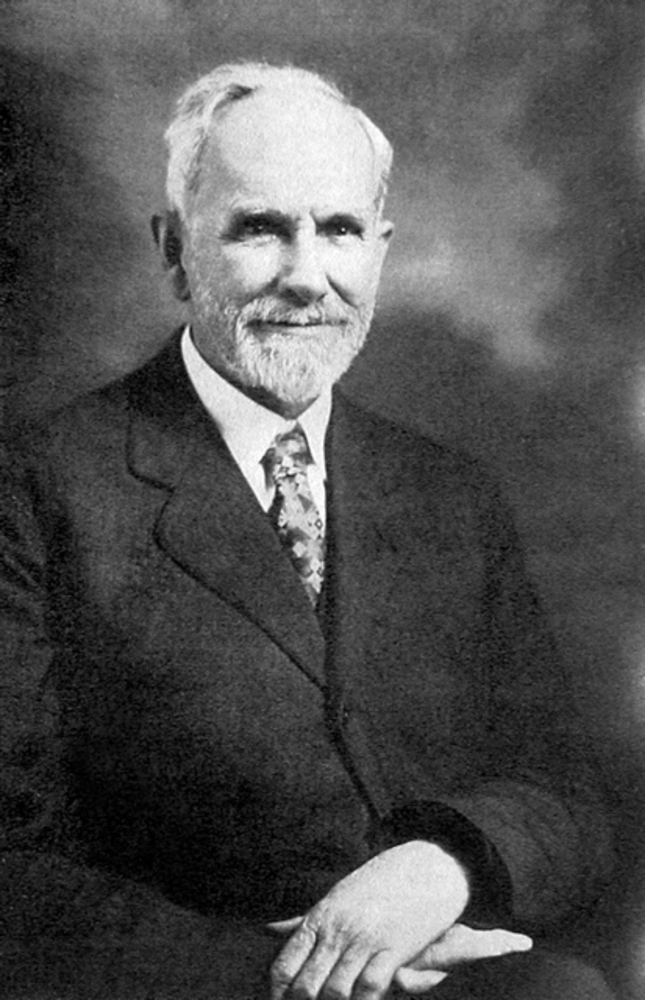The life of Oregon's Thomas Jefferson Howell is surely unique among botanists. The words "untutored" and "impoverished" have often been used to describe Howell, and certainly he was both, but he nevertheless managed to write and self-publish the first book on the regional flora of the Pacific Northwest.
Howell was born in Missouri on October 8, 1842, the youngest of five children of Benjamin and Elizabeth Howell. Because he did not wish to live in a slave state, Benjamin Howell and his family joined a wagon train to Oregon in 1850. They settled on Sauvie Island on the Columbia River west of Portland.
Benjamin Howell expected his three sons to become farmers and so arranged virtually no formal education for them. Thomas spent three months at the island's first school, but otherwise he and his brothers were self-taught.
As a young boy, Thomas Howell became interested in the wildflowers that grew near the family's homestead. As he matured, his interest in botany grew, and he began to travel throughout the region, collecting and learning the names of the plants he encountered. One of his favorite collecting areas was the Siskiyou region of southwest Oregon, where he discovered many species never before documented in Oregon. He pressed his specimens and offered them for sale to collectors.
In 1877, at the age of thirty-five, Howell published a twenty-two-page Catalogue of the Flora of Oregon, Washington and Idaho. Because he could not sell unnamed specimens, he sent his plants to eastern botanical experts such as Asa Gray, Sereno Watson, and Liberty Hyde Bailey for identification.
Early on, Howell and his brother Joseph discovered a small, unknown aquatic flower near their Sauvie Island homestead that they sent to Harvard botanist Asa Gray. Gray named the plant in 1879, honoring the brothers with the name Howellia aquatilis and dedicating it to its "discoverers who are assiduous collectors and acute observers and who have already much increased the knowledge of the botany of Oregon."
For years, Howell gathered information for his book on the flora of the Pacific Northwest, which he began to work on in earnest around 1882. He was probably unemployed at the time, although he had at one time supported himself as postmaster of the Willamette Slough post office on Sauvie Island. He was to work on his book, which appeared in seven installments between 1897 and 1903, for the next twenty-one years.
When he was fifty-one years old, Howell married and fathered two sons, Dorsey Richard Howell (1894) and Benjamin Allen Howell (1904). With a family to support and his book to write and set in type, Howell's financial situation became even more critical. The family moved frequently, and Howell ran a small grocery store and a laundry. At one point, he manufactured mittens on a sewing machine, earning seven cents per pair.
One thousand copies of Howell's A Flora of Northwest America were printed (with 792 pages describing 3,150 species); the few that remain are collector's items. The combined volume, priced at five dollars, was a financial failure for Howell, but he could take pride in the fact that this first comprehensive book of the flora of Oregon was a critical success. Willis Lynn Jepson of Berkeley wrote: "Mr. Howell . . . deserves no small meed of praise for the courage and resolution necessary in the face of such circumstances." The often-cranky E.L. Greene wrote that Howell "accomplished the greatest amount of meritorious and valuable scientific work that was ever done by any man of any epoch, on so very rudimentary an education in letters." Alice Eastwood of the California Academy wrote the kindest words of all: "The conscientious striving for the truth which distinguishes the work of this botanist, his independence in asserting his own views, and his thorough, careful work, command our respect; while the enthusiasm and self-denial which have resulted in the publication of a work of this magnitude by any author comparatively poor in money, at his own expense, commands, again, our admiration."
Exhausted after his final book fascicle appeared, Howell donated his 10,000-specimen personal collection to the University of Oregon in 1903. Albert Sweetser, founder of the University Herbarium, arranged for the university to hire Howell for the 1903-1904 school year to curate the collection. By now a sick man, Howell struggled for eight more years to support his family. He died at age seventy, two months after the death of his older brother Joseph. Both are buried in the Howell family plot in Vancouver, Washington.
-
![Thomas J. Howell.]()
Howell, Thomas Jefferson, bb004571.
Thomas J. Howell. Photo by Gilman L. Eastman, courtesy Oreg. Hist. Soc. Research Lib., bb004571
-
Howell, Thomas Jefferson.
Thomas J. Howell.
Related Entries
-
![Abraham Lincoln Savage (1864-1950)]()
Abraham Lincoln Savage (1864-1950)
At the time of his death in July 7, 1950, Abraham Lincoln Savage was co…
-
Louis F. Henderson (1853-1942)
Louis Forniquet Henderson was one of Oregon's most important early bota…
-
William Cusick (1842-1922)
William Cusick was a Northwest pioneer botanist who contributed enormou…
Map This on the Oregon History WayFinder
The Oregon History Wayfinder is an interactive map that identifies significant places, people, and events in Oregon history.
Further Reading
Howell, T.J. A Flora of Northwest America. Portland, Ore., 1897-1903.
Kruckeberg, A., and Ornduff R. "Thomas Jefferson Howell (1842-1912): The Untutored, Impoverished Botanist." Oregon Flora Newsletter 9:2 (June 2003): 9, 12. Archived at the Oregon Flora Project Web site.
Ornduff, R. "Thomas Jefferson Howell and the First Pacific Northwest Flora." Kalmiopsis, Journal of the Native Plant Society of Oregon 15 (2008):32-41.





